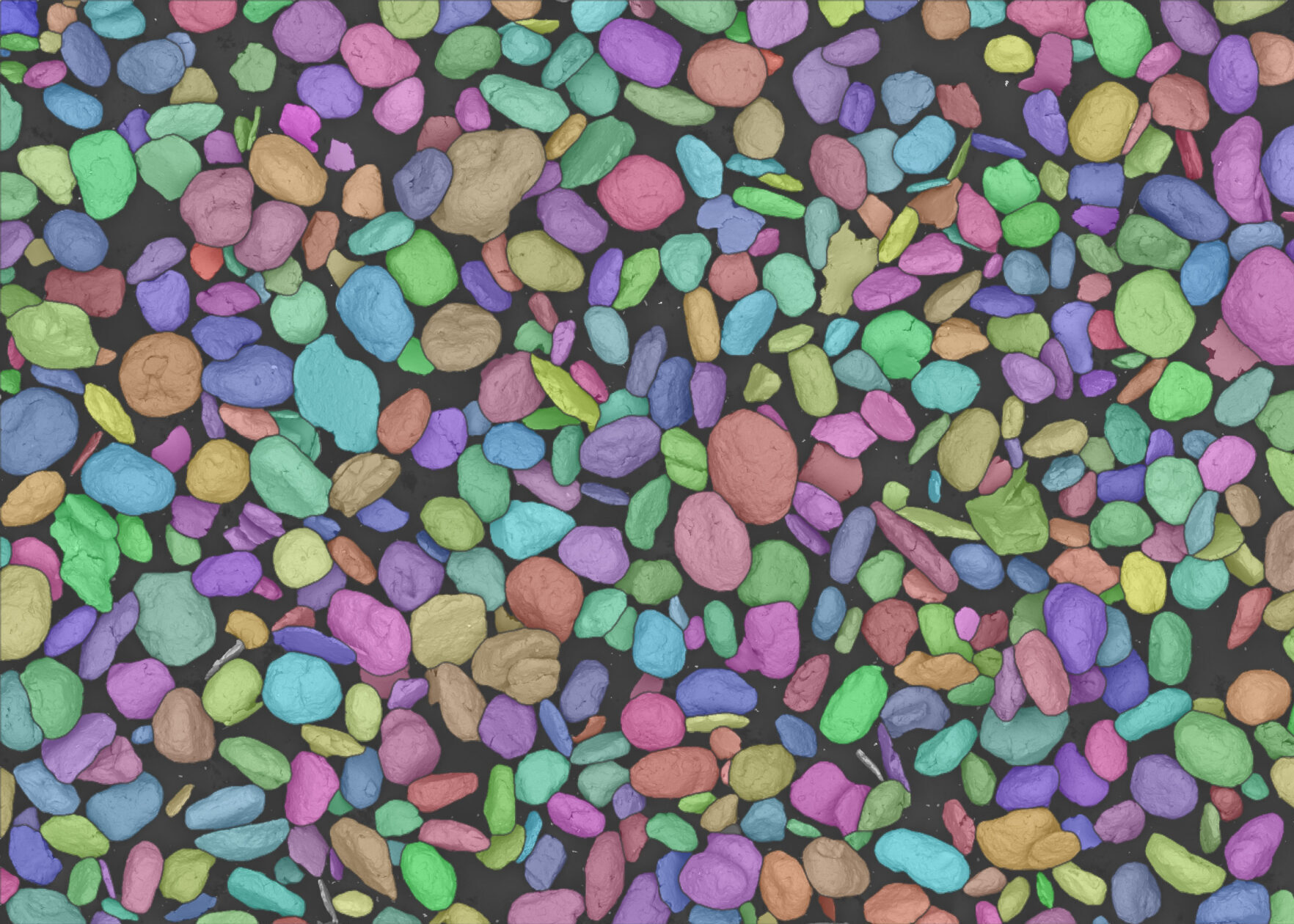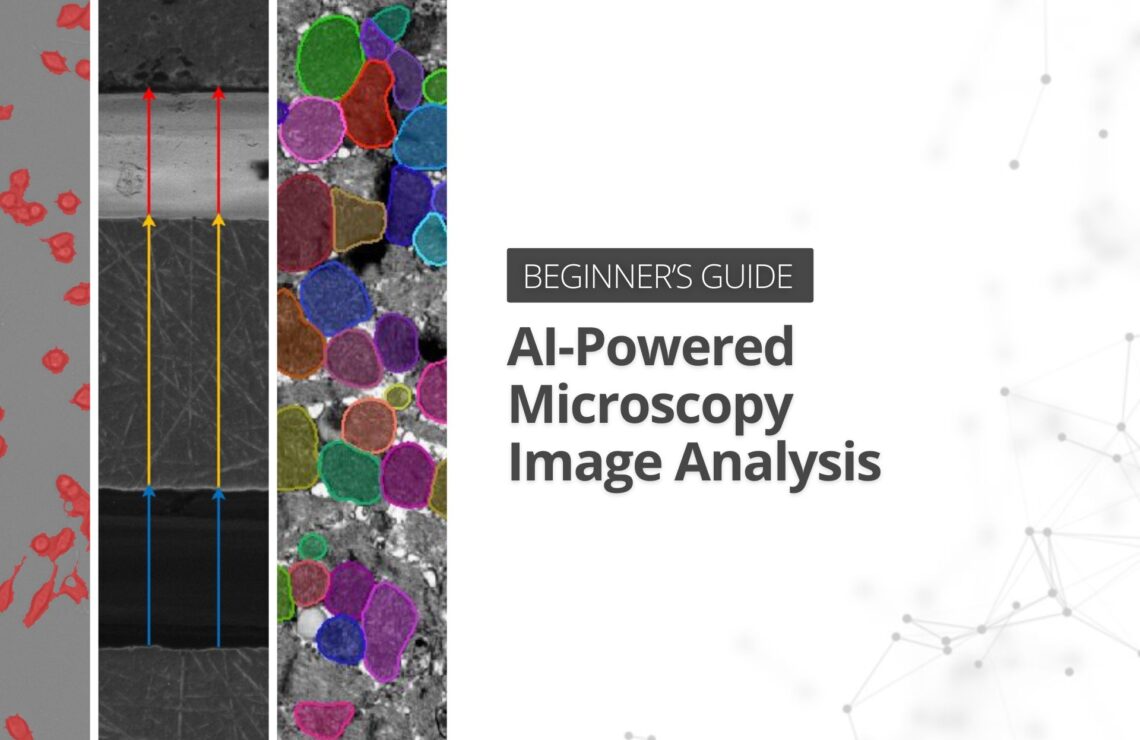Across labs and research centers, scientists working in EM materials research are feeling the pressure to improve efficiency and accuracy. The need for faster results, sharper precision, and more streamlined workflows isn’t slowing down—and with larger datasets and tighter deadlines, finding new ways to boost efficiency has become essential.
At Media Cybernetics, we’ve spent years collaborating with researchers to better understand these challenges. In a recent webinar, we shared strategies that are making a real difference for labs today—approaches built around real-world needs, not buzzwords.
Here’s a look at four practical ideas helping teams work faster, smarter, and with more confidence.
1. Pre-Trained AI Models: A Fast Track to EM Materials Research Efficiency
One of the biggest time drains in EM materials research has always been segmentation—tracing structures by hand or training new models from scratch. It’s slow, tedious work that pulls valuable time away from discovery.
That’s why pre-trained AI models are becoming a game-changer.
What are pre-trained models?
Pre-trained models are AI models that have already been trained on a set of labeled data to recognize specific patterns or features. Instead of starting from scratch, you input your layers and labels to teach the model what to look for. Then, when you introduce a new image, the model uses what it has learned from the previous training to identify similar features—saving time and improving consistency in analysis. If the model initially misses a few objects of interest, a simple “human-in-the-loop” training step can quickly refine its accuracy, minimizing the need for extensive retraining.
Why it matters:
- Faster turnaround on image analysis
- More consistent results across images and users
- More time spent interpreting data, not prepping it
It’s a smarter way to work—boosting EM materials research efficiency without cutting corners.
Older methods like hand drawing or machine learning tools take too much time. With the rise of AI and deep learning, starting with a pre-trained model has become a real game-changer. By starting with a model that already understands the ground truth, researchers can significantly boost their efficiency. This is where the future is heading.
Nick Beavers
CEO of Media Cybernetics
2. Fine-Tuning Makes AI Work for You, Not the Other Way Around
Of course, no two samples—or labs—are exactly alike. Even the best pre-trained model might need slight adjustments to perform perfectly on your specific datasets.
That’s where fine-tuning comes in. By refining a model with just a small set of your own images, you can quickly teach it to recognize the nuances that matter most to your research. It’s a flexible, low-lift way to achieve custom, publication-ready results without dedicating weeks to full retraining.
 With Fine-Tuned AI Deep Learning Models
With Fine-Tuned AI Deep Learning Models
 Without Fine-Tuned AI Deep Learning Models
Without Fine-Tuned AI Deep Learning Models
What it means for your lab:
- AI models tailored to your research needs
- Less frustration compared to off-the-shelf tools
- A growing library of custom models reusable across projects
Fine-tuning empowers researchers to maximize EM materials research efficiency while maintaining the precision their work demands.
3. Standardized Protocols Keep Results Consistent
Scaling projects across teams and sites often leads to inconsistencies in image analysis and data interpretation.
Standardized workflows are key to overcoming these challenges—ensuring reproducibility and alignment across teams. Platforms that incorporate analysis protocols are designed to guide workflows, ensuring consistent and reliable results every time.

The benefits:
- Faster onboarding for new team members
- Cleaner comparisons across experiments
- Fewer errors slipping through the cracks
Platforms like Image-Pro AI make it simple to create, share, and update protocols, taking the guesswork out of everyday analysis.
4. Batch Processing: A Must-Have for Modern Labs
With datasets growing larger and imaging runs getting longer, analyzing images one-by-one simply isn’t sustainable anymore.
Batch processing lets researchers apply the same analysis steps across hundreds—or even thousands—of images automatically. When combined with AI segmentation and standardized workflows, batch processing doesn’t just save time; it scales up projects seamlessly.
Why it’s a game-changer:
- Massive time savings
- Faster project turnaround
- More focus on insights, not repetitive tasks
By combining deep learning with batch processing, researchers are seeing dramatic improvements in efficiency, leading to faster insights and higher-quality results.
Technology That Puts Researchers First
At Media Cybernetics, we believe that the best innovations aren't just about speed or power—they’re about making life easier for the scientists doing the hard work.
These four strategies—pre-trained models, fine-tuning, standardized protocols, and batch processing—are already helping institutions overcome today’s challenges in materials research. They’re real-world solutions that boost efficiency without sacrificing the quality or depth of scientific discovery.
When you have better tools, you can spend less time wrestling with workflows—and more time pushing the boundaries of what’s possible.
See These Strategies in Action
Want to dive deeper into these strategies? Watch our webinar to see these strategies in action and visualize how AI and automation can transform your EM materials research workflow!
![[Webinar Replay] 4 Strategies to Improve Accuracy & Efficiency for Life Science Research [Webinar Replay] 4 Strategies to Improve Accuracy & Efficiency for Life Science Research](https://mediacy.com/wp-content/uploads/2025/03/4-strategies-TO-improve-2-1-700x450.jpg)


![[Webinar] Particle Analysis Errors Costing You? Protect QC with Deep Learning Automation in 1 Hour](https://mediacy.com/wp-content/uploads/2025/05/Social-Particle-Size-Analysis-Webinar-2025-06-6.jpg)
Media Cybernetics
sales@mediacy.com
Related Links